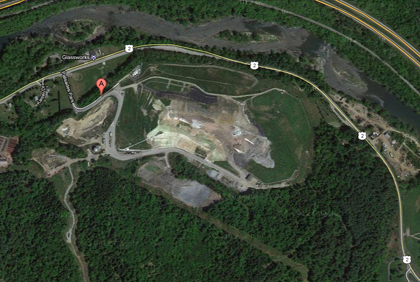
The Moretown Development Review Board (DRB) gave Moretown Landfill manager Tom Badowski until September 20 to submit more detailed data on a proposal to add a fourth landfill cell last week.
On Thursday, September 6, the DRB held a public hearing regarding the proposed expansion of the town’s landfill.
The hearing was the second in a series of meetings that will take place before Interstate Waste Services can construct a fourth trash cell that will extend Moretown Landfill’s life by 12 to 16 years. Currently, the site has only enough space to remain in operation until this March.
The landfill’s expansion “is a significant development,” DRB chair John Riley said at the hearing. “It raises a lot of issues and obviously that’s why a lot of people are here tonight,” he said, addressing the dozen or so Moretown residents in attendance.
Interstate Waste Services has already submitted an application for an Act 250 land development permit as well as an application for a variance from the Vermont Agency of Natural Resources to construct a fourth trash cell. The company is also seeking a state permit to downgrade the status of the groundwater beneath the landfill from potable to nonpotable.
According to Riley, the purpose of last Thursday’s meeting was to identify potential effects of the landfill’s expansion, so that the board can begin to develop a schedule to address the issues.
Of the homeowners at the hearing, many were concerned about the effects of the landfill on their groundwater supply. “Is it a guarantee that the landfill is not going to contaminate our well?” one resident asked, and another added that studies have already indicated levels of arsenic in the water under the current landfill site.
Other issues of public concern include the landfill’s effect on air pollution (dust and odors), traffic patterns and the properties of the waste itself (what is it? where does it come from?).
“What we’re missing is some historical narrative perspective,” Riley said, explaining the need for a comprehensive record of the construction and conditions of the landfill’s current cells and how the proposed fourth cell “fits into that context.”
The DRB has granted Moretown Landfill general manager Tom Badowski until Thursday, September 20, to submit this narrative. “I can probably get it done before then,” Badowski said, indicating his willingness to comply with the request, and the board discussed the option of publishing the narrative online, so that it’s easily accessible for the general public.
In the end, despite agreeing that Interstate Waste Service’s application for expansion—as it stands currently—is largely incomplete, the board withstood pleas from residents to reject the company’s application entirely and instead agreed to move forward with the approval process, provided that Badowski can amend the application to include more detailed plans and research.
The next hearing, which will draw upon these amended plans and discuss what Riley calls the “big picture,” as well as groundwater issues, is scheduled for Thursday, September 20, at 6:30 p.m. in the Moretown temporary town offices located next to the landfill on Route 2.
The following Thursday, September 27, the DRB will hold a site visit that will meet at 4:30 p.m. in the same location. The site visit “will be very helpful to the board,” Riley said, as it will allow them to better visualize and thereby comprehend the effects of the landfill on nearby property owners. “I think it’s really going to take a while to walk around and get a sense of what [the landfill] is proposing,” he said.
While many nearby property owners are opposed to the landfill’s expansion, many who live further away from the site support the landfill, as it generates considerable revenue for the town.
In 2011, Moretown received $532,000 in tipping fees from the host agreement it maintains with Interstate Waste Services. Of that money, it used $277,000 to lower taxes and put the remaining $255,000 in the town’s Capital Reserve Fund and Capital Savings Reserve Fund.
If the landfill ceased to operate, the town would lose out on over $500,000 annually. But if the expansion project is ultimately approved, there’s still the question of time. Depending on when it can begin construction, the company might not have time to finish the fourth cell before March, when the landfill is slated to reach capacity. If this happens, the town will lose out on money for every month afterwards that it takes to complete construction and get the landfill up and running again.
According to Badowski, construction will take about 60 to 90 days, but harsh winter weather conditions could prolong the project. “That’s always the big question,” Badowski said, “but right now, we’re just focusing on the permitting process.”
{loadnavigation}






